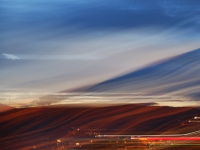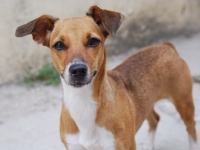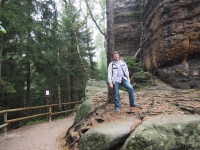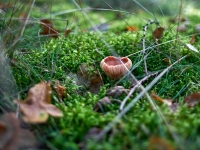Trip to Belgrade and Sarajevo in December 2022
I ate my first pljeskavica when I was 27 years old. It was in 2008, my friend Yurets and I walked into a simple street-food kiosk near the Savelovskiy train station in Moscow. That kiosk was owned by a real Serbian woman, who was not only a chef but also a cashier and a waitress. Pljeskavica is a traditional part of Serbian cuisine. It looked similar to a hot dog or burger: a puffy pork and beef patty, that was cooked right in front of us over an open fire, in a freshly baked bun with either onion or garlic sauce that perfectly complemented the taste of the meat. At that time I remembered this food as the best street food I had ever tasted in my life. I never ate this pljeskavica again; I changed my job and this place became too far away for me, and then this kiosk went out of business.
I can’t say that since then I’ve been fanatically hunting for the place where I can taste exactly that pljeskavica from 2008, but I order this meal every chance I get. The first disappointment was that the original pljeskavica served in a restaurant is just the patty, but the bun is an extra added to the street-food version of this meal. The sauce I remembered is also not a traditional companion to the meat but a speciality of that first eatery. I tasted various pljeskavicas in Russia in several restaurants and street-food kiosks but none of them was right; not the same fresh and puffy bun, not the same patty and the completely wrong sauce.
And so, now in December 2022, I decided to take a trip to the Balkans. In terms of the weather, it’s far from the best time to visit the Balkan Peninsula, but there were three reasons why it wasn’t so important. Firstly, I had to take a vacation before the end of the year (otherwise, by German laws, it would simply burn). Secondly, I got the chance to see my old friends who recently relocated to Belgrade. And finally, and perhaps most importantly, I got the chance to taste a traditional pljeskavica cooked by authentic Serbian chefs. This gave me some hope that I would find my ideal pljeskavica like the one from 2008.
The first stop on my trip was Belgrade, then I flew to Sarajevo and finally returned to Berlin with another overnight stop in Belgrade. In my original route I also had a stop in Tirana, Albania’s capital, but AirSerbia changed their flight schedule shortly before my trip started and this change made it impossible for me to get to Albania this time. I’ll share my impressions about the cities later, but for now, I’ll continue my story about hunting for the perfect pljeskavica.



I had a hypothesis: that first pljeskavica is so deeply ingrained in my mind not because it actually was so good, but because of the confluence of circumstances: youth, good weather, good mood, street food — all of these things enhanced the taste of the meal that may not have been so perfect as I remembered it. So, first of all, I decided to try a street-food pljeskavica in Belgrade. It didn’t go over well. In the kiosk on the Knez Mihailova street they just warmed up an already-cooked patty instead of cooking it from fresh meat. That pljeskavica didn’t have any chance to match the perfect one.
Then there were two not-bad restaurants. In the first one, in my opinion, they served pljeskavica in a too sophisticated way, and the second one had too much rush, which prevented me from enjoying the meal. The last place in Serbia where I tasted pljeskavica was a small restaurant “Taverna” located in a semi-basement. It had only 6 or 7 tables and I was the only visitor in that place (one of the advantages of visiting the Balkans in December :)). It also had traditional Serbian cuisine and a cosy homely atmosphere. A perfect place to enjoy the food and take a break from a whole day on your feet. In all three restaurants, pljeskavica was equally delicious and, sadly to me, very different to the one I kept in my memories.





At this point, I had to give up and stop hunting for the pljaskavica of my dreams: I had run out of time in Belgrade and I headed to Sarajevo — the capital of Bosnia and Herzegovina. Here in Sarajevo, for the first time in my life, I tasted ćevapčići — another traditional Balkan meal. The bread and meat here differ in appearance from that used in pljeskavica, but surprisingly to me, in their taste and texture ćevapčići (a.k.a. ćevapi) was the closest meal to that pljeskavica from the Savelovskiy train station I could find. Fresh buttered bread, chopped onions instead of sauce (yeah, the sauce from that first time definitely was onion, not garlic!) and several small kebabs with a consistency not similar to the pljeskavicas from the Serbian restaurants but very similar to the patty from my first pljeskavica. Totally unanticipated: in the wrong country and in the wrong meal I had expected but with a near 100% probability I found the exact same taste from my 2008! Hooray!
Historically, Bosnia was inhabited by South Slavic peoples, but from 1483 to 1908 it was part of the Ottoman Empire. Therefore, unlike Serbia, in addition to Balkan meat and bread food, there are a lot of Turkish sweets: baklava, lukum as well as Turkish coffee. In the central tourist street Sarači nearly every other kiosk sells sweets of all shapes and colours, and each of those kiosks has its own assortment. The only pity is that regardless of the shape or colour all of these sweets taste more or less the same. The prices are very affordable — about 10 euros per kilogram of lukum. One kilogram of lukum is actually a huge amount of sugar for one person: with great effort, I ate half a kilo within three days.




Well, enough about the food, let’s talk about the journey itself.
Belgrade’s airport reminded me of Moscow’s Domodedovo airport in 2008: construction sites everywhere, scammy taxi drivers that offer to take you into the city and many posters that warn you not to use their services and recommend you to use a taxi from the official taxi rank. Nowadays, as a tourist spoiled by Uber, Yandex.Taxi and civilised first line of taxi cabs at the airport exit, Belgrade’s airport seemed a bit wild to me. Due to the construction, it wasn’t simple to find the official taxi rank and in fact, the official taxi drivers didn’t look any different to the scammers: some groups of men who chat to each other and ignore people around them. But in the end, I found a taxi and got to the hotel on the meter. I paid about 4000 Dinars, about 35 Euros, which at German rates is a reasonable price. Well, how reasonable, in Berlin, of course, I would have taken a train for 3.80 that would have brought me home in less than 1 hour, but a taxi from the airport to home would have cost at least 60 Euros.
On my way back to the airport I ordered a taxi at the hotel reception. It cost 28 Euros and the guy from the reception told me that he would order a taxi from a trusted operator who wouldn’t cheat me. I hadn’t paid much attention to that phrase but realised what he meant when I returned to Belgrade from Sarajevo. I didn’t anticipate any issues with ordering a taxi this time: despite not being the most convenient way of ordering a taxi I already knew where to look for an official one and what to be prepared for. Alas, it was not so. First, in the week that passed between my first and second arrivals to Belgrade, the roads near the airport had been dug up and I had to find a new path to the official taxi stand. Second, despite the fact that the taxi driver I went with was hanging around the official taxi stand and had a car with what appeared to be an official taxi sign he turned out to be a scammer. The meter in his car was located behind the gear stick, whereas other taxis usually had it integrated in the central mirror. Because of this position, I couldn’t see if the ride price was changing over time. Finally, this scumbag demanded 6600 Dinars from me, about 55 Euros, twice as expensive for almost half the distance as my previous rides! I didn’t have any motivation to argue with him, it wasn’t such a critical amount of money, but it became clear that one should always be on their guard here in Serbia.
I should mention that here in Belgrade such taxi services as “Yandex.Taxi” and others are available. I had to use them to avoid scammers, but I couldn’t even imagine that I would fall for such a scam.
In Sarajevo the service of taxis is more civilised than in Belgrade; at the airport, the first parking line is dedicated to the taxis, in the city centre, there are many taxi stands and all drivers work with a meter. There is also a taxi app mojTaxi available, but it doesn’t work in the usual way; you just see all the available taxis on the map and can send a request to any of them. The driver, in his turn, can either accept or decline your request.
With the flights, as well as with the taxis, things didn’t go so smoothly. As I mentioned, in my original plan I had wanted to visit Belgrade, Tirana and Sarajevo. In fact, these cities are located not so far from each other and you could rent a car and drive between them. But these cities are located in the mountains and in reality, a journey between them could take up to 8 or 9 hours. That’s why I decided to travel between them by plane.
The problem is that neither from Sarajevo, nor from Tirana is there a direct flight to Berlin nor a flight between these two cities. So an ideal route Berlin - Belgrade - Tirana - Sarajevo - Berlin turned into the Berlin - Belgrade - Tirana - Belgrade - Sarajevo - Belgrade - Berlin route. But that’s not the end of it. A couple of weeks before my vacation, when all the tickets had already been bought and all the hotels were booked, AirSerbia postponed the flight Tirana - Belgrade and now it was going to leave later than the Belgrade - Sarajevo flight. This change made it impossible to either visit Tirana or Sarajevo and I decided to exclude Tirana from my itinerary.
Therefore, the final route was: Berlin - Belgrade - Sarajevo - Belgrade - Berlin and two days appeared unexpectedly I decided to spend in Serbia. The only thing I had to do was get a refund for the cancelled part of the itinerary: Belgrade - Tirana - Belgrade - Sarajevo. I was afraid that AirSerbia would only refund me for the postponed leg and would insist on taking the remaining flights. But, kudos to the company, the service was excellent: after one call to customer support and explaining the situation the airline cancelled this part of the route and refunded me the money without any pushback. Perhaps I was lucky in that I had booked the flights Belgrade - Tirana - Belgrade - Sarajevo as a single ticket and if it had been 2 or 3 separate tickets then such a simple cancellation wouldn’t have been possible.
As I’ve already mentioned, December is definitely not the best time of the year for visiting the Balkans. The weather forecast predicted temperature fluctuations between -2 °C and +10 °C and it wasn’t clear which type of clothes I should take with me. Finally, I decided to take my winter clothes with me and for the first few days in Belgrade I suffered from overheating because the air there warmed up to 17 degrees! In boots and a jacket designed for the Russian winter, to put it mildly, I was a little hot. But on the third day, the temperature dropped to zero and my decision to bring winter clothes was justified. Similar weather fluctuations awaited me in Sarajevo as well: the temperature varied from +2 ° C to +14 ° C.
Belgrade’s downtown — the old city — is a rather tight, dismal, and greyish place, this greyness was compounded by cloudy grey skies. One of the central sites of the old town is a pedestrian shopping street Knez Mihailova which didn’t impress me as well, maybe I was just over such places. However, I liked Kalemegdan Park, it’s located on the hill offering a wide panorama of the Danube. Having a couple of days to spare because of the cancelled trip to Tirana, I was able to just wander aimlessly through the park and the fortress located there, sit on benches and enjoy the view. Sure, in summer, the views there are much more picturesque, but, on the other hand, crowds of tourists likely wouldn’t have allowed me to enjoy the view in silence.






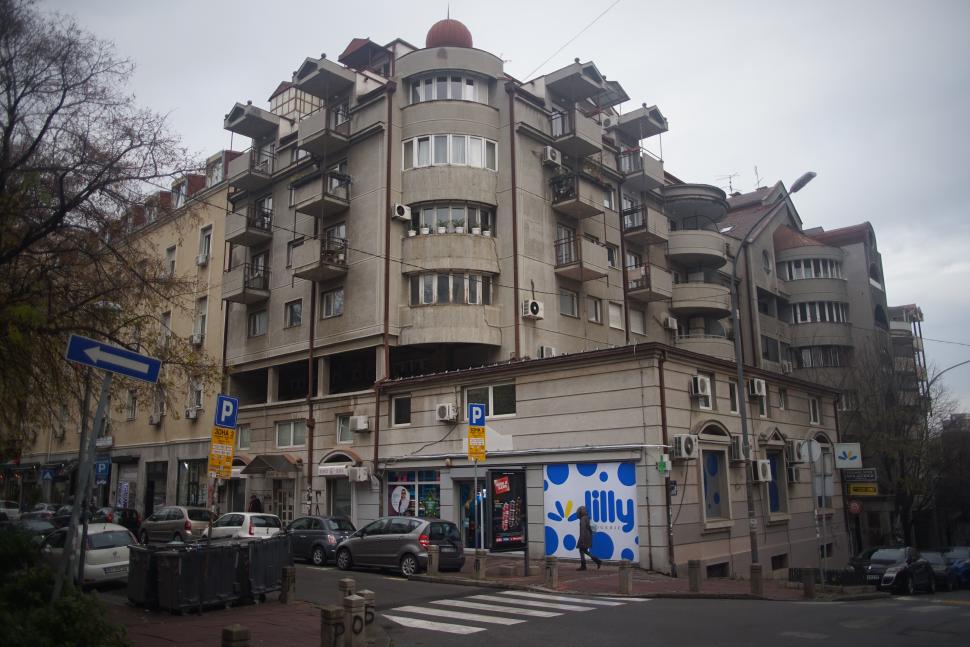


A couple of months before the trip, two of my former colleagues, with whom I had worked at Forbes, relocated here to Belgrade. At that time I was planning my itinerary, I didn’t know it and it was a pleasant surprise for me. I met up with the guys in the new town and from there we walked to the Zemun district. The new town is much more spacious than the old one, which is a plus, but to me, this place seemed like a boring bedroom community filled up like the old town, with greyish colours. Zemun was originally an independent town, in different times it was part of the Austro-Hungarian and Ottoman empires, it differs noticeably from the rest of Belgrade.









Apart from the streets of the old and new towns, one of the must-see places for me was the Tesla Museum. It’s located on the first floor of the two-story building. For 800 Dinars (about 7 Euros) they show a short documentary movie about Nicola Tesla and demonstrate working examples of his inventions: electric motors, a remote-controlled boat (the first remote-controlled mechanism ever!), and Tesla’s coils. Furthermore, visitors are invited to take part in experiments. For example, a volunteer, which I volunteered to be, can be jolted by a short (about 2 cm) lightning bolt, or in their hand a lamp, that is not connected to the power source, can be lit. This is a very fascinating place.
Also among the interesting sights in Belgrade: St. Sava and St. Mark’s Orthodox churches and the monument to Nicolas II should also be mentioned.
In the nineties, the countries of the former Yugoslavia fell on hard times. Slovenia, Croatia, Bosnia and Herzegovina and North Macedonia wanted to break away from Yugoslavia, while Serbia tried to keep them in the country by force. This led to a series of wars, which ended in 1995 after NATO intervened. Then, in 1998, the conflict in Kosovo escalated, ending with the NATO bombarding Belgrade in 1999.
The consequences of these conflicts can still be seen more than 20 years later; in Belgrade and Sarajevo there are many destroyed buildings, bullet marks on the facades of buildings and monuments and museums dedicated to the war.



The events that took place in Sarajevo in 1914 were the trigger for the beginning of World War I. That was the main reason why I wanted to come here. I expected to see historical sights from that epoch, but the Latin Bridge, where Franz Ferdinand was assassinated, has a rather simple, boring design and is not particularly interesting. It was ridiculous to expect that the assassination site would have been chosen by the conspirators guided by the interests of tourists who would visit the place 100 years from then. Besides, the memories of the 1992-1995 war during which the city was under siege are still fresh in the minds of the locals. There are a lot of museums devoted to this event and a lot of signs to it are placed throughout the tourist centre. The most interesting museum, however, is located not in the city centre, but near the airport — it is an 800-meter-long tunnel dug almost by hand to be able to deliver food to the besieged city and evacuate people.





In general, the city is rather boring, except for the pedestrian street Sarači with many cafes, restaurants, stores, and mosques, there is nothing else remarkable here. When I first arrived in Sarajevo, the first place I stumbled upon was this particular street, and it shocked me. I was only 260 km away from the European-looking Belgrade, but it was like some kind of Turkish market! My first thought was that the whole city looked like that! But no, this is just one tourist street, which even has a marker separating the modern, European-style city from the Eastern-looking tourist centre.

The cable car — a legacy of the 1984 Winter Olympics — which leads to the top of a mountain from which a view of the city should be available might be of interest in Sarajevo, but unfortunately for me the weather was poor and the view was obscured by a grey fog.
I had two full days here, but one would have been enough to see all the sights.
To summarise, I can say that the Balkan Peninsula is a place that would be great for a two or three week road trip during the summer, stopping off for no more than a couple of days at various cities.


